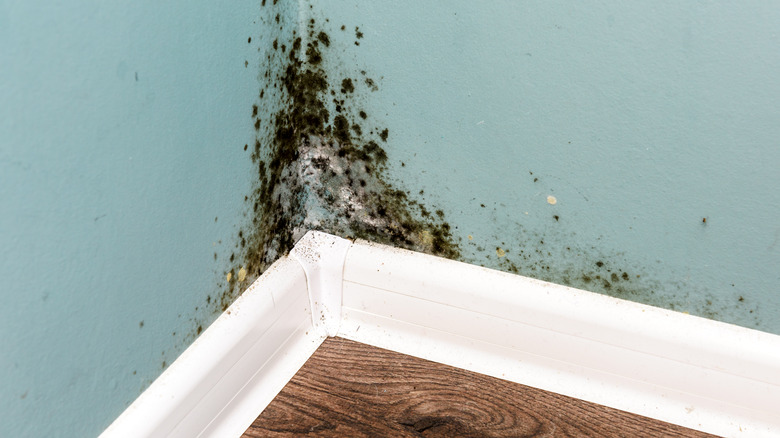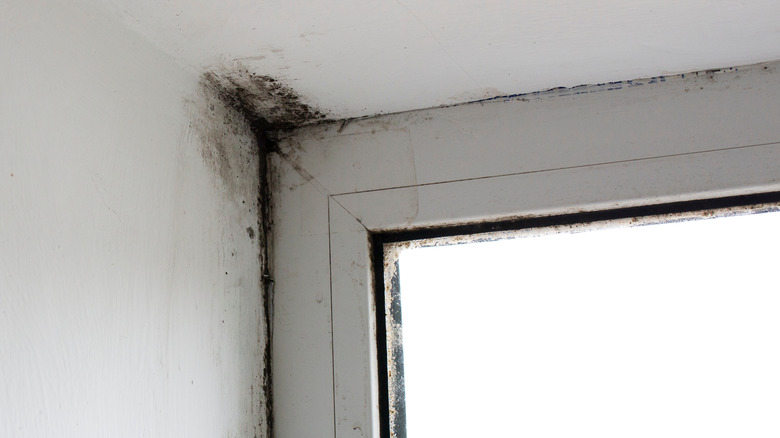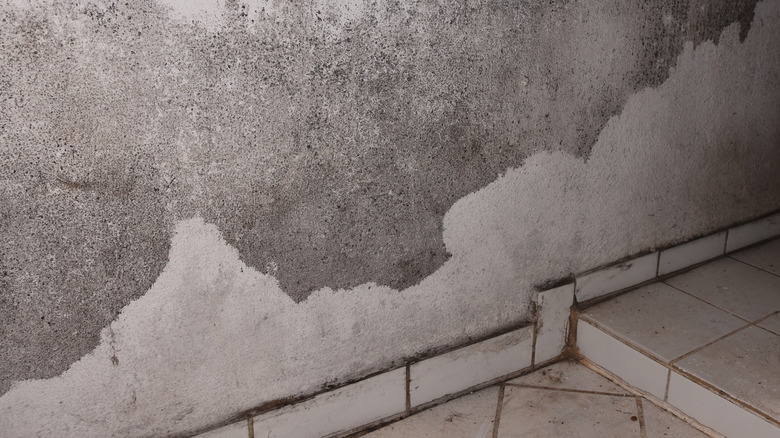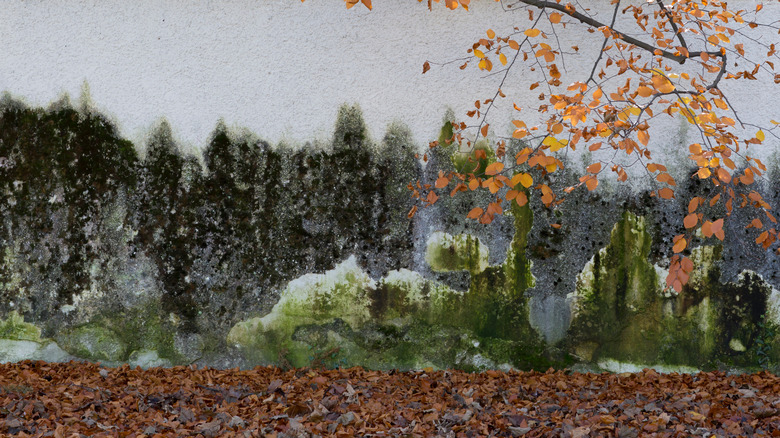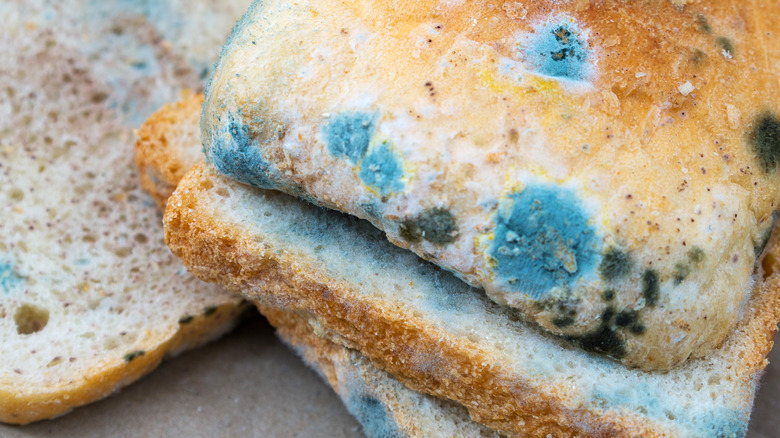The Most Common Types Of Mold That Can Grow In A Home, According To An Expert
If you notice damp or black patches on your walls or behind appliances such as the refrigerator or washing machine, you have to wonder if there's a worrisome mold or bacteria in your home or if you just forgot to clean this area. The U.S. Environmental Protection Agency makes it clear that mold is a serious health risk, and some may have an allergic response to even small amounts. In addition, asthma sufferers are at a heightened risk of complications if they come in contact with mold. With this in mind, you may be wondering what to do if you do find it. Testing for mold in your house isn't easy, though.
It's always wise to call in a professional if there's any risk to you or your family because mold identification is challenging to tackle alone. In an exclusive interview with House Diges, Dallas Nevill, the owner of Rainbow Restoration of Southwest Mesa, a Neighborly company, offers some recommendations on the identification of common mold in the home.
Black mold is the most dangerous
You've likely heard that black mold is worrisome, however, a lot of mold has a dark, nearly black color. So, how do you know when there's a risk? Nevill explains, "Stachybotrys Chartarum, or black mold, typically grows in places that are constantly moist, such as shower tiles, around leaky pipes, or on areas that produce a lot of condensation." If that's where you're finding mold in your home then consider a closer look and immediate action.
Nevil goes on to say, "black mold is black in color and has a slimy texture. It also produces a noticeably musty older. Of all household molds, black mold is linked to the most health problems. Exposure can cause hay fever-like symptoms, asthma attacks, sinus infections, and even fatigue and depression." It's not wise to take any risks. If you believe it could be black mold, seek out a licensed mold remediation company for immediate help and leave the area undisturbed.
Alternaria thrives in several environments
Did you find something discoloring the surface of a couch or other soft furnishings? You may be unsure whether the kids just spilled something or if it's mold. Nevill warns us to be on the lookout for Alternaria. "Alternaria is considered one of the most common outdoor molds, but it also grows indoors. It likes damp spots such as showers and under leaky pipes, but Alternaria also thrives in areas with minimal moisture, such as in ductwork or upholstery."
Again, without disturbing or touching it, take a closer look at what's actually there. Nevill shares some key tips for pinpointing this type of mold. "The mold is dark in color and has a downy or woolly texture. It is one of the most likely to cause allergic reactions in people. Hay fever-like symptoms typically follow exposure to Alternaria, and it may even cause you to develop asthma." In some situations, you may not actually see the mold before you realize there's a problem. Your family member may have just started to develop asthma symptoms or received an asthma diagnosis, which could warrant an inspection of the home to find the culprit.
Cladosporium is an unwelcome guest
Some people believe mold only occurs if there's a leak in the home or perhaps a piece of a chicken nugget is lost under the couch. However, that's not the case, explains Nevill. "Cladosporium begins growing outside on plant material and then enters the house through open windows and doors." If that's not worrisome enough, he also notes that "once inside, Cladosporium colonies may form on wooden surfaces, carpeting, insulation, bathroom ceilings, wallpaper, foundation walls, and other surfaces in rooms with poor ventilation."
While the chances are good that you'll notice it throughout your home, it could be in a smaller area near windows. Nevill states, "Cladosporium is another type of black mold, though it's not the toxic Stachybotrys Chartarum. The color ranges from olive green to black, depending on the species, and has a powdery texture." It's easy to overlook the impact that this type of mold can have on a person, as it may seem like a cold or seasonal allergies. "Respiratory problems such as coughing and sneezing, plus itchy eyes and runny nose, are common symptoms," warns Nevill.
Penicillium isn't beneficial in your home
What about mold that grows on food? is that also something to be concerned about? Nevill explains, "Penicillium mold loves to grow on rotting foods and fabrics, from bread and cookies to mattresses and couch cushions. It also feels at home growing on insulation, carpet, and wallpaper and spreads rapidly from place to place." That means that the moldy loaf of bread that got forgotten about contains mold spores that, if disturbed enough, could move through the home, infiltrate other areas, and create havoc as it does.
"Penicillium is green or blue and has a fuzzy texture," explains Nevill. It's often pretty easy to see and grows quickly, too, but is it dangerous to our health? Nevill states, "exposure to penicillium can cause chronic sinus infections, lung inflammation, and fever-like symptoms." If you find yourself with any of these symptoms, or if you visually identify mold in your home, call a professional to ensure your home's air quality remains good and safe for the family.
